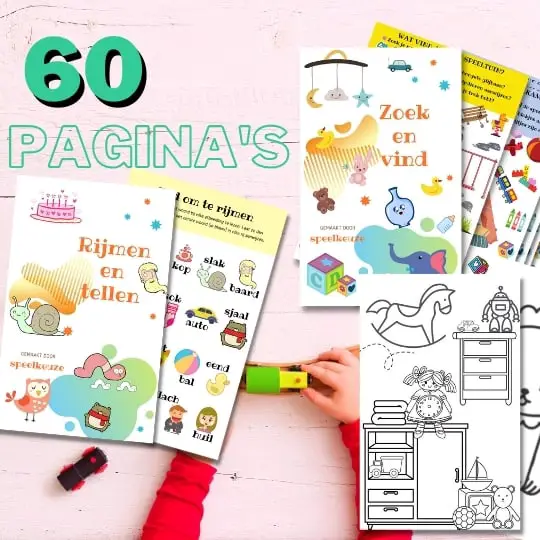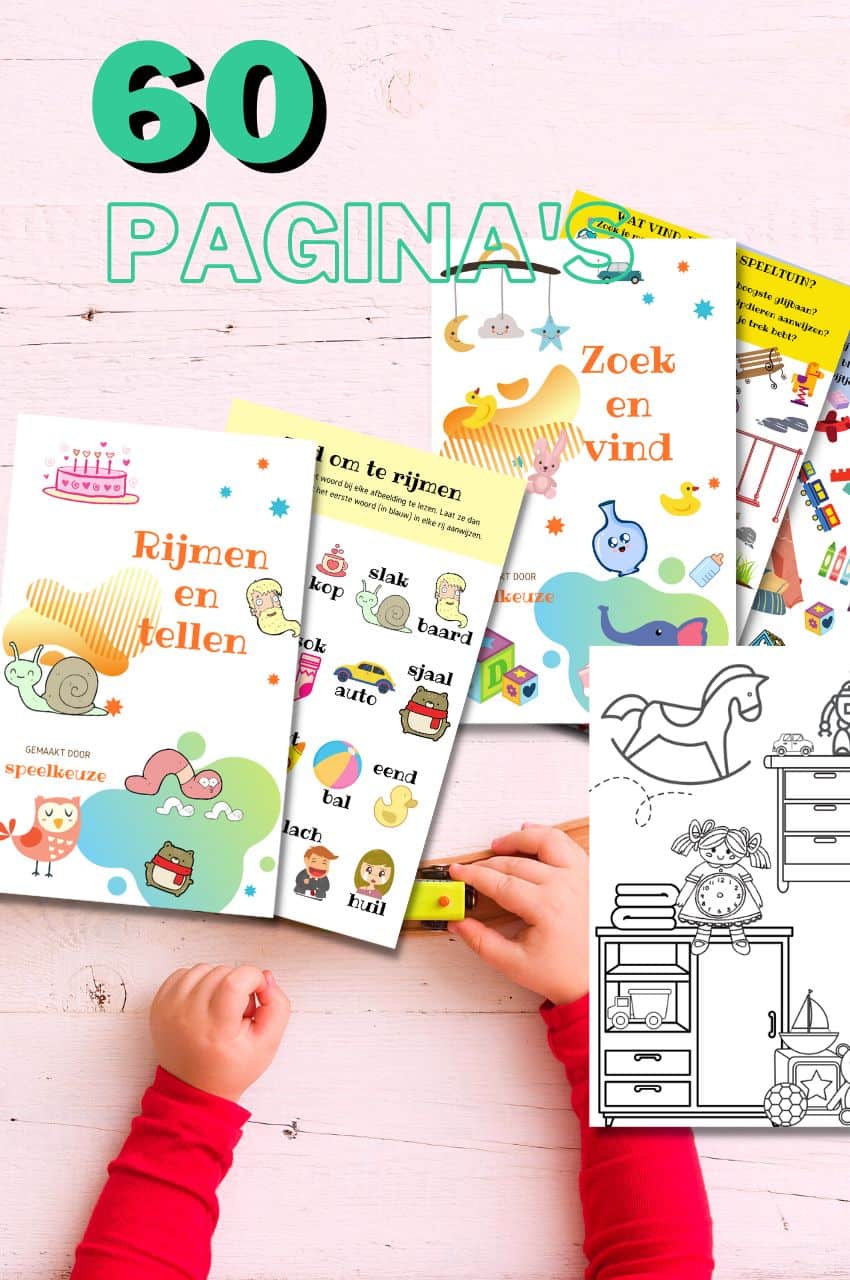My toddler plays with food | 6 tips for a quiet (r) meal

Always something to do for the holidays or rainy day?
Play Choice now has the ultimate activity book collection, with over 60 pages of fun coloring pages and educational puzzles.
Toddlers can make quite a mess when they eat. They sometimes spit, throw or crush food, talk with their mouths full and fidget.
Yes, it is okay for your toddler to play with their food, but within reason.
Toddlers are experiential learners, so resist the urge to intervene when your child is tearing, smelling, or stomping their food.
Of course you have seen carrots, applesauce and mashed potatoes for years, but these are just some of the fascinating new objects in your child's life.
Children learn through touch and play, and learning about food is no different.
For example, a little squeezing, mixing and mashing will teach your child about the texture of different foods.
That's how they learn!
As hard as it is, it's best not to comment at all (resist the urge to roll your eyes too!).
Remember, it is perfectly normal for children to play with their food before trying to taste it, and it may take a few tries before your child gets the food even near their mouth.
Research shows that children can understand good manners by the time they are about five years old (although this does not necessarily mean that they will always eat the way you would like from then on).
Letting him play and experiment with it is the first step to acceptance.
However, if the meal turns into non-stop playtime, it's time to set some limits.

From toddler to toddler activity book collection
Educational games and coloring pages for 3 to 6 years
Your toddler and preschooler will love this e-book, along with the accompanying printables. He or she can play with it at every stage of development, together with mom and dad.
Buy at Bol.comWhat we discuss in this comprehensive post:
Let your toddler play less with food
Set up toddlers to eat
Toddlers are curious and energetic, which makes them run around and want to explore.
Sitting for a long time is an effort for a young child. Some toddlers even eat especially while walking and almost completely refuse to sit at the table.
Is it so bad with you? Hopefully, your little one will at least still be sitting at the table, even though he may be playing a bit with food.
In addition to being anti-social, eating while running around increases the risk of choking.
Suggestions for making your child sit during meals include:
- Accept that behavioral changes take time and effort. Be patient and calm.
- Discuss your action plan with your partner and other caregivers so that your approach is consistent.
- Be a good role model. Do not let your child see you walking around the house while eating.
- Establish a predictable meal routine to help your child remember that they are required to sit at a suitable table without distractions such as television.
- Turn off the television.
- Don't fight the issue of sitting down at mealtimes. Concentrate on making meals fun so your child will want to stay at the table earlier.
- For example, involve your child in family discussions.
- Talk to your child in a calm and reasonable way and explain why it is best to sit down while eating. You may have to have this conversation many, many times.
- When they leave the table, tell your child their meal is over. Take away their plates. If they are hungry later, offer them a healthy snack.
- Be consistent. Insist that snacks are also eaten while sitting.
- Compliment your child when they engage in the desired behavior.
- Be realistic about the timing of meals - for example, don't plan meals for when your child is overtired.
Timing
Most children start playing with (and throwing) their food when they have actually finished eating.
So if your toddler suddenly starts tossing around with the oatmeal that he was still eating just a few minutes ago, it's time to end the meal.
If your child starts throwing food or uses their dinner to create modern art on your wall, you may want to take the food away.
Not only does it protect your kitchen and keep you from having to clean up an even bigger mess, but it also lets him know that such mannerisms cause food to go away.
When he's really done eating, just demonstrate a simple rule about not throwing food.
Take the food away quietly, clean it, hands, mouth, remove it from the table and give it some toys.
He soon gets the idea that food is for eating and that playtime is for toys.
Is playing with food a normal part of play for toddlers?
It is important to understand that playing with food is normal behavior and that playing with food is a way for toddlers to learn. Toddlers are experiential learners, and they explore the world through touch and play, including with food. It is therefore fine to let them play with their food within reasonable limits without intervening.
They learn about food by experimenting with different textures and flavors. Although it can be difficult at times, it is best not to comment and be patient while they this phase of playing and learning in their toddler years Get on. However, if playing with food dominates the mealtime too much, it may be time to set some boundaries. The most important thing is to remember that this is a natural part of their development and acceptance of food.
Limit the mess
It takes time to develop the fine motor skills needed to eat neatly with a knife and fork.
Don't assume that your child is deliberately messy while eating as it is difficult for a toddler to direct food to the mouth without spilling.
Suggestions include:
- Learn about the stages of child development so that you don't expect too much from your child.
- Plan on mess by putting a plastic sheet under the high chair.
- Present the food in easy-to-eat ways, such as cut into strips or fingers.
- Have your child eat with his hands instead of a knife and fork.
- Say something like "food is for eating" or "are you ready?" when your child throws food and then clear his plate.
- Do not mind the food on the floor but concentrate on the food, pick it up when the meal is ready.
Toddlers and food waste
Toddlers often play with their food.
For example, your child can
- likes to crush food in his hands
- throwing food on the floor
- deliberately spit and drip with his mouth full
- or not leaving most of his food on their plate.
This can be stressful for parents for three reasons:
- food costs money
- meals take time and effort to prepare
- and parents may be concerned that their child is not eating enough.
You may get angry with your child for having wasted food or worrying about whether they are getting enough to eat.
Toddlers are good at handling your fear. They are also good at recognizing their own hunger and fullness signals and, without illness, will never voluntarily starve themselves.
Suggestions include:
- Don't spend too much time preparing meals for your toddler.
- Try to make eating relaxed and enjoyable for everyone in the family.
- Avoid fights with toddlers over food. Remember, a healthy toddler knows when he is full. Watch their growth and length charts for a few months for reassurance.
- Your toddler's belly is much smaller than yours. Offer a variety of small servings on their plates. You worry less if a few slices of banana fall to the floor instead of an entire fruit bowl. You can always give them more.
- Use special toddler plates made of non-breakable material to prevent food from tipping over easily.
- Don't force your child to eat everything on their plate. Better to waste a few leftovers than to fight with your child or force them to eat when they have had enough.
- Place dishes centrally on the dining table and let your child serve himself or ask for it. For my son it helped a lot to give his own plate and put the rest of his food on the table. He often wanted to throw food first, especially if there were too many different things, and then try it.
- Set consequences if food is intentionally wasted by older children, such as taking away their plates. Offer them a healthy snack later when they are hungry.
- Don't try to convince your child to eat by talking about "hungry" kids in other places. Your child will certainly not be able to understand that.
Toddlers and good table manners
Meals are also when kids learn about table manners.
Suggestions include:
- Involve your child in setting the table.
- Set a good example and show good table manners yourself.
- Your child may be more likely to copy your behavior if you move him to a large human chair instead of his high chair. Give them the same kind of place setting as yours, but don't give them sharp cutlery.
- Explain why table manners are important, including the difference between a casual meal at home and a formal restaurant or grandma's house.
- Point out the benefits of good table manners. For example, it is difficult for your child to make themselves understood when they are speaking with their mouths full.
- Gently remind your child if he forgets his manners, but don't make it a problem.
Reward systems for toddlers
Simple rewards can help reinforce your child's behavior. Suggestions include:
- Compliment your child when they show good table manners.
- Offer stickers or hand stamps to sit nicely or show good manners.
- Don't use lollipops, chocolates or desserts as a bribe. Dessert is there or not.

Always something to do for the holidays or rainy day?
Play Choice now has the ultimate activity book collection, with over 60 pages of fun coloring pages and educational puzzles.
Joost Nusselder, the founder of Speelkeuze.nl is a content marketer, father and loves trying out new toys. As a child he came into contact with everything related to games when his mother started the Tinnen Soldaat in Ede. Now he and his team create helpful blog articles to help loyal readers with fun play ideas.